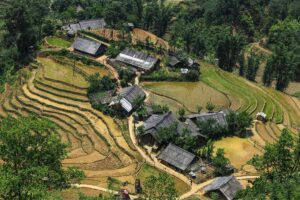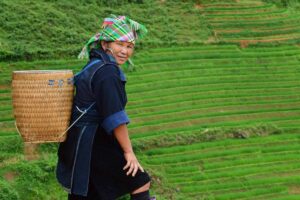Sapa is a village in the north of Vietnam, known for its beautiful terraced rice fields and hospitable ethnic minority tribes and has the highest peak in Indochina, Fansipan. It is also the most popular place to do trekking in Vietnam. Most tourists are not interested in the city, but do like to explore the small villages scattered around it. A particularly famous village is Cat Cat Village.
Cat Cat Village is located at the foot of the Muong Hoa Valley, about three kilometres from the city of Sapa. This village originated in the 19th century, after several ethnic H’Mong and Dzao families came together from other mountainous areas in North Vietnam. They started growing rice and maize in the region, as well as weaving fabrics and making handicrafts for survival.
- From Sapa to Cat Cat Village
- What to see & do at Cat Cat Village
- Why you should not visit
- 5 Alternatives for Cat Cat Village
How to get there
If you descend to Cat Cat Village, you must follow one of the main streets in Sapa until the trail starts. From here, the road to Cat Cat Village is an easy and beautiful route for trekking. The village is only a 20-30 minute walk from the center of Sapa; and the walk through mountains offers you a beautiful view of rice fields, or even grazing buffalo.
It only takes 5 minutes to get there from Sapa city by taxi or motorcycle.
What to see & do at Cat Cat Village
At a certain point you come to the box office for tickets to enter Cat Cat Village. This will only cost you 25,000 VND (1 USD). The money goes to local families who have opened their homes so that you can see and learn their culture. You will also receive a map of the village at the entrance.
The village
The minority that lives in Cat Cat village are mainly Hmong people. These villagers still wear their typical traditional Hmong costumes. Their traditional house is often built with three rooms, including three doors with wooden walls and roof. The main door is always closed and only opened on important events such as weddings and funerals. There is inlaid floor with food, an altar, places to sleep, kitchen and a room to receive guest.
Many woman in the village are good in crafting and sewing. You see woman behind looms making brocade decorated with designs from nature like birds and flowers. The H’Mong women still dye these brocade fabrics using leaves and plants as ancient tradition. There are also woman making silver and gold jewelry of high quality. Some of these items can be found in the shops in the village.
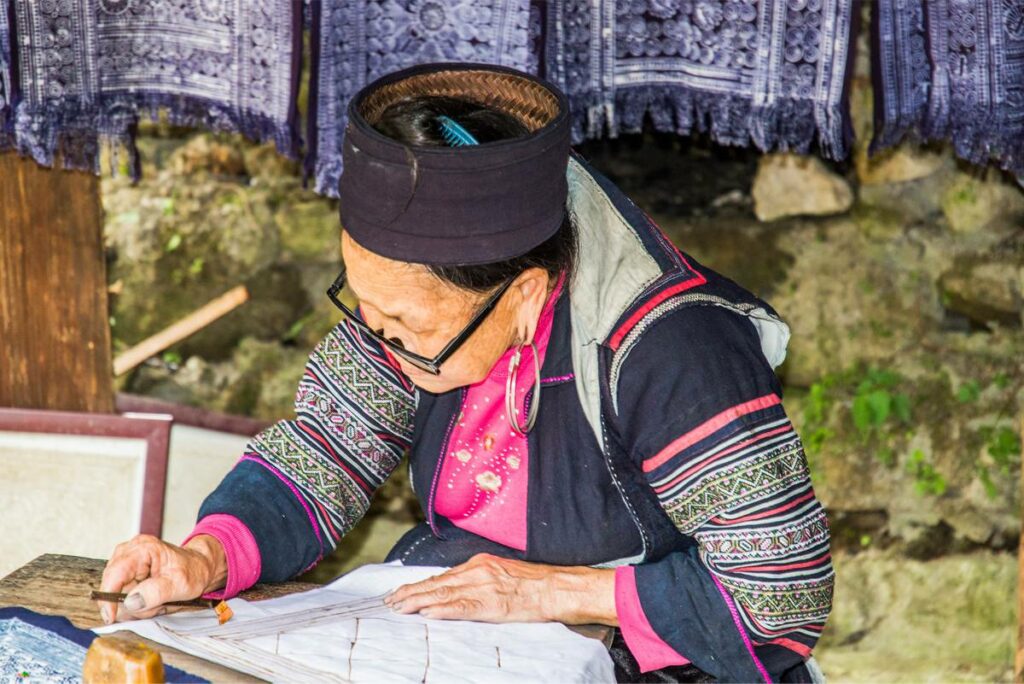
You can get a glimpse of the traditional lifestyle of the residents by looking in the houses that are open to tourists. These are called exhibition houses and are not a traditional museum, but the goal is the same: to collect and exhibit materials of cultural significance.
While walking through the village and participating in traditional activities you get an idea of the daily life of the locals. You can also buy traditional souvenirs and handicrafts from artisans.
While following the path you will see a number of water wheels (or water mills) on the side of the road. These wheels are powered by running water. When you walk further you will see how people use the flowing water.
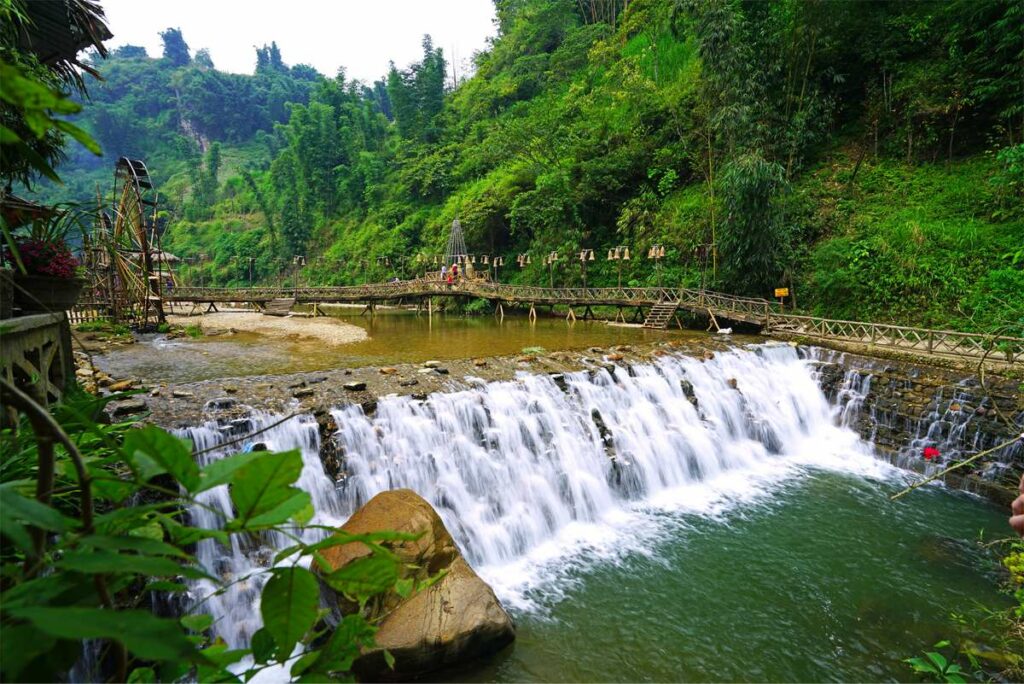

Cat Cat waterfall
The Cat Cat waterfall is one of the major attractions. You can put your feet in the cool water when you jump over the rocks.
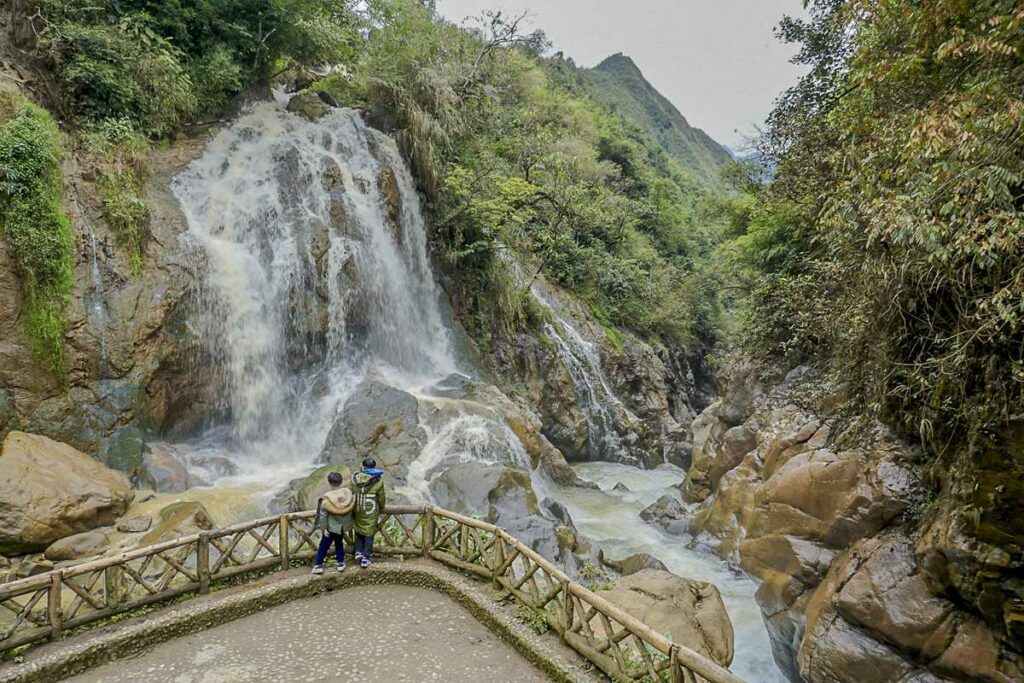
Activities
There are also programs and activities in the village such as Cat Cat Village’s Culture Days, One day becoming a Dao farmer and dance performances at the Cultural Center. The villagers and local government introduced these activities to share and show the local culture of the minorities living around Sapa.
Shops
There are shops on both sides of the road through Cat Cat. These stores sell a range of items, from packaged and fresh food, to handicrafts and clothing. You will see how women sew colorful pieces of brocade while children play with pets or even farm animals that are temporarily pets.
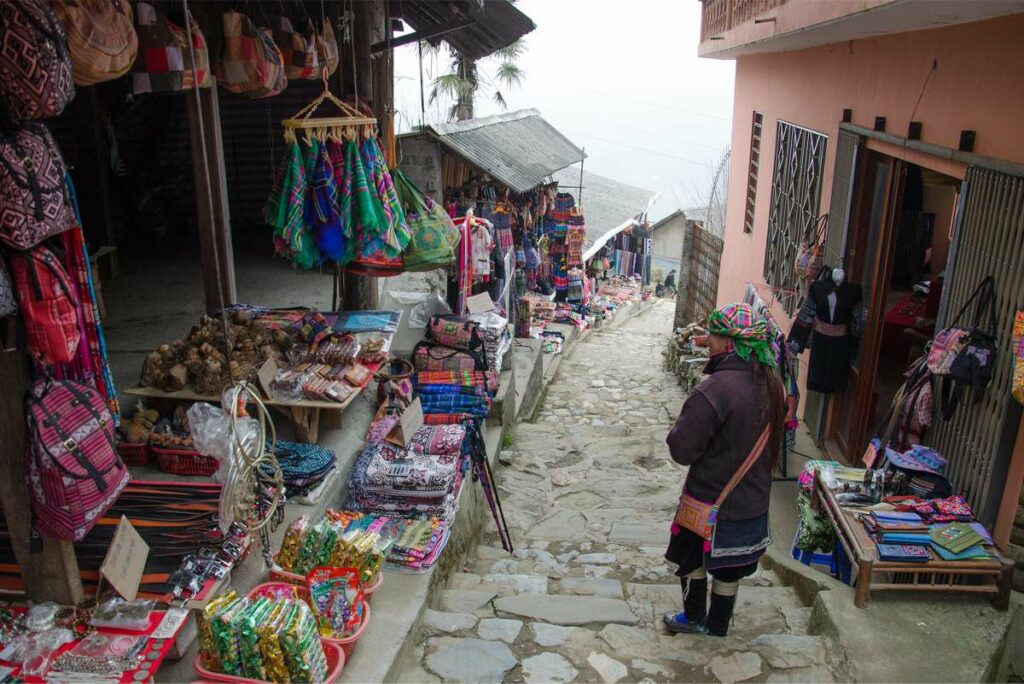
Hemp, cotton and linen are collected from the forest to serve as material for this clothing, and silkworm silk is used for embroidery. The colors are also naturally yellow from turmeric (an herb), black from a local leaf, red and brown from the peel of local leaves and blue from indigo leaves. Cat Cat is known for its indigo paint technique that you can see while walking around.
Many residents of Cat Cat Village are also skilled in making gold and silver jewelry. You can find it anywhere in the city of Sapa.
Why you should not visit Cat Cat village
After reading what you can see in the village and the added images, you might think this is a nice place to go to. Yes, the village looks nice and the local minorities are beautifully dressed, but it is not recommended to visit if you are looking for a real local experience. The village feels more like a theme park made for mass tourism of Sapa town. A lot of things feel or actually are not real and are made solely for tourist to make photos.
During the day it can get very crowded with people from town coming here to take pictures. A visit to this village can really effect a negative influence towards the area. And that is not necessary, because there are still plenty of places where you can find the authentic life style.
5 Alternatives for Cat Cat Village
The best way to discover the authentic life style of the local minorities is by making a trekking in Sapa. You walk from village to village and the farther you get, the more rural and authentic is feels.
Even though we don’t recommend visiting Cat Cat Village, it is located in a beautiful area of rice fields. It is actualy also a great spot to start your trek to some of the authentic villages that are listed below as alternatives.

1. Sin Cha village
About 4 km north of Cat Cat is Sin Cha, another large Hmong settlement scattered along the road. Some tours to this village include an overnight stay in a homestay, and you also have the opportunity to see weavers at work and listen to performances of traditional music.
2. Ta Phin village
Further north, about 10 km from Sapa, lies the village of Ta Phin populated by Red Dao, another popular homestay spot.
3. Ban Ho village
Ban Ho is located 30 km fro Sapa, mainly inhabiited by the Mong, Dao, Tay and Giay people. Because of the distance with Sapa it feels a lot more authentic here. Also the homestays here are very basic and owned by the minorities.
4. Lao Chai village
Lao Chai can be easily reached from Sapa and is a nice trekking destination with beautiful rice fields.
5. Ta Van village
Ta Van is the most popular village outside Sapa to stay overnight in a homestay. Even though, the village kept a lot more of its authentic feeling than Cat Cat village.

